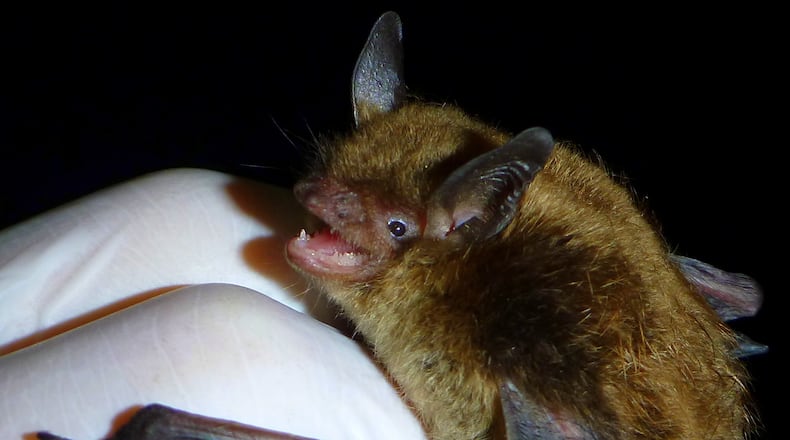Happy Halloween, the celebration of all things spooky, made scarier for people this year by the COVID-19 pandemic.
But for some of Halloween’s most beloved icons, bats, the situation is dire: They’re struggling to survive. Their nemesis is a highly virulent disease, white-nose syndrome, caused by a cold-loving fungus first reported in the United States in New York in winter 2006–2007.
Since then, the malady has spread and killed millions of bats — and now threatens extinction or extirpation of several bat species.
The disease, which may wipe out 90% of bat colonies, showed up in Georgia in 2013, affecting bats hibernating in caves in North Georgia. Last winter’s survey of those caves showed that bat populations remain 93% down from historical highs.
The latest report from the Georgia Department of Natural Resources, however, shows that the fungus may be edging south, having been found in some road and drainage culverts in three Piedmont counties, Clarke, Carroll and Monroe.
Bats may use culverts in areas where few caves are found. No infected bats have been found yet in the three counties, but the fungus’s presence there worries biologists. DNR’s bat specialist Katrina Morris said that it’s not known if the fungus in the culverts will affect the animals as it does in caves.
The fungus forms itchy white patches on hibernating bats' snouts and wings, causing them to wake up from their torpor. They then leave the caves to hunt for insects at a time when few or no insects are available. The futile hunting depletes their fat reserves. Death comes by starvation, cold or stress.
Of Georgia’s 16 bat species, those most affected include the little brown, tri-colored and Northern long-eared bats — all of which play critical ecological roles by gobbling up tons of insects.
The DNR says there are no known effects from the white-nose fungus on humans or other wildlife.
For more information and frequently asked questions about white-nose syndrome, go to georgiawildlife.com/WNS.
IN THE SKY: From David Dundee, Tellus Science Museum astronomer: The South Taurid Meteor Shower peaks at about 10 meteors per hour on Wednesday night. Best viewing: In the east from about midnight until dawn. The moon will be full Saturday night — October’s second full moon, a “blue moon.” Mercury is low in the west at dusk. Venus is low in the east and rises about an hour before sunrise. Mars rises in the east at dusk. Jupiter and Saturn are high in the southwest after dark.
About the Author
Keep Reading
The Latest
Featured


